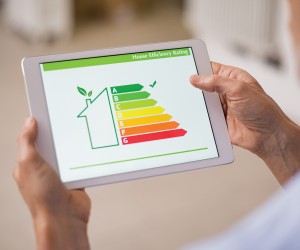Smart cities use information and communications technology (ICT) to enhance liveability, workability and sustainability, thereby improving the life of its residents[1].
“The Smart Cities Framework captures the relationship between a city’s responsibilities (what it needs to accomplish for citizens) and its enablers (the smart technologies that can make those tasks easier),” explains Barry Bredenkamp, General Manager for Energy Efficiency at The South African National Energy Development Institute (SANEDI). Municipalities and cities pursuing a smart city agenda should familiarise themselves with this document.
City’s responsibilities
- Built environment – the city’s buildings, parks and public spaces
- Energy - the infrastructure to produce and deliver energy, primarily electricity and gas
- Telecommunications - communications for people and businesses
- Connectivity - communications for devices
- Transportation - the city’s roads, streets, bike paths, trail systems, vehicles, railways, subways, buses, bicycles, streetcars, ferries, air and maritime ports – any and every system that relates to citizen mobility
- Health and human services - the provision of health care, education and social services
- Water and wastewater infrastructure - from collection to distribution, to use, reuse and recycling. Pipes, distribution centres, catchment areas, treatment facilities, pump stations, plants and even the water meters at private homes are all essential components of this responsibility. Water purity and cleanliness are also addressed here
- Public safety infrastructure, agencies and personnel to keep citizens safe, including police and fire departments, emergency and disaster prevention and management agencies, courts and corrections facilities
- Payments to link a payer and a payee; refers to all the key contributors involved: merchants, consumers, businesses, banks, payment instruments providers, payment schemes. Payments sit at the heart of the economic activity in cities and form the core component of every economic flow including salaries, consumer spending, business procurement and taxes. They have become so systematic that they often go unnoticed.
Smart city enablers
Smart cities can radically improve all of the responsibilities through the power of ICT.
1. Instrumentation and control is how a smart city monitors and controls conditions. Instrumentation provides the eyes and ears of a smart city. Examples include smart meters for electricity, water and gas; air quality sensors; closed circuit TV and video monitors and roadway sensors. Control systems provide remote management capabilities. Examples include switches, breakers and other devices that let operators control from afar.
2. Connectivity is how the smart city’s devices communicate with each other and with the control centre. Connectivity ensures that data gets from where it is collected to where it is analysed and used. Examples include citywide Wi-Fi networks, RF mesh networks and cellular networks.
3. Interoperability ensures that products and services from disparate providers can exchange information and work together seamlessly. Interoperability has many benefits. It prevents the city from being ‘locked in’ to just one proprietary supplier. It gives the city more choice, since it can buy from any company that supports the city’s chosen standards. It lets the city build projects over time in phases, with confidence that all the pieces will work together in the end.
4. Security and privacy are technologies, policies and practices that safeguard data, privacy and physical assets. Examples include the publishing of clear privacy rules and the implementation of a cybersecurity system. Security and privacy play a critical role in enabling smart cities because they build trust with people. Without trust, a city may have difficulty adopting new technologies and practices.
5. Data management is the process of storing, protecting and processing data while guaranteeing its accuracy, accessibility, reliability and timeliness. Data is king in a smart city. Proper management is essential to maintain data integrity and value. A citywide data management, transparency and sharing policy, including proper policies around access, authentication and authorisation, is one step toward proper data management.
6. Computing resources include
a. The computer ‘brains’
b. Storage of data
c. Special capabilities needed for smart cities. A geographic information system (GIS) is the most essential special capability, since it allows the smart city to know where everything is located. However, it is worth noting that GIS is only as helpful as the data cities provide to it. All three computing resources are increasingly supplied via the ‘cloud’ – remote servers connected to the Internet. Cities have options for deploying cloud services, including public, private and hybrid models.
7. Analytics create value from the data that instrumentation provides. Examples include forecasting crime the way we already forecast weather; analysing electric power usage to know when and where to expand; analysing conditions to predict which equipment needs repair; automatically plotting the best route for a mass transit user, and creating personalised portals for every citizen by analysing what they value most. In addition, analytics that utilise data from across departments have tremendous potential to identify new insights and unique solutions to delivering services, thereby improving outcomes.
“Smart technologies have matured to the point that cities of all sizes can tap into enormous computing power, driven by integration of information and collaborative partnerships. It is time for South African cities to join this revolution,” concludes Bredenkamp.
[1] Smart Cities Council definition for Smart Cities










